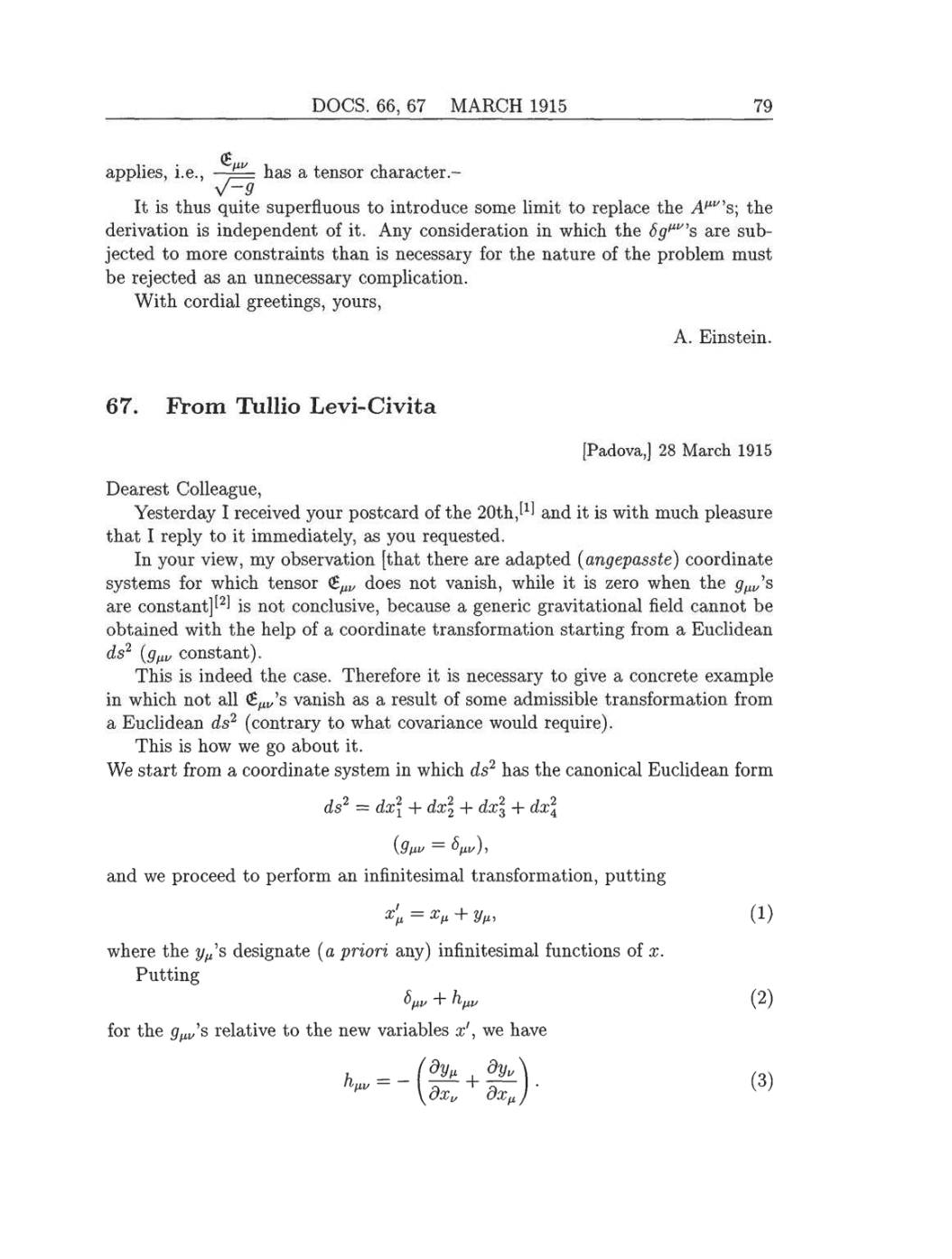DOCS.
66,
67 MARCH 1915
79
applies,
i.e.,
-g
has
a
tensor
character.-
It
is
thus
quite superfluous
to
introduce
some
limit
to
replace
the
Auv’s;
the
derivation
is independent
of it.
Any
consideration in which
the
ôguv’s
are
sub-
jected to
more
constraints than
is
necessary
for
the
nature of
the
problem
must
be
rejected
as an
unnecessary complication.
With
cordial
greetings, yours,
A.
Einstein.
67. From
Tullio Levi-Civita
[Padova,]
28
March
1915
Dearest
Colleague,
Yesterday
I
received
your
postcard of
the
20th,[1]
and
it
is
with
much
pleasure
that
I
reply
to
it
immediately,
as
you requested.
In
your view, my
observation
[that
there
are
adapted
(angepasste)
coordinate
systems
for which tensor
Euv
does not
vanish,
while
it
is
zero
when
the
guv's
are constant][2]
is not
conclusive,
because
a generic
gravitational field
cannot be
obtained with the
help
of
a
coordinate
transformation
starting
from
a
Euclidean
ds2
(guv
constant).
This is indeed
the
case.
Therefore it
is
necessary
to
give a
concrete
example
in which
not
all
Euv's
vanish
as a
result
of
some
admissible
transformation
from
a
Euclidean
ds2
(contrary
to what covariance would
require).
This
is
how
we
go
about
it.
We
start from
a
coordinate
system
in which
ds2
has the canonical Euclidean form
ds2
=
dx21
+
dx22
+
dx23
+
dx24
(guv
=
6uv),
and
we
proceed to perform
an
infinitesimal transformation,
putting
x'u
=
xu +
yu, (1)
where
the
yu's
designate
(a priori
any)
infinitesimal functions
of
x.
Putting
^uv
+
huv
(2)
for
the
guv's
relative
to
the
new
variables
x', we
have
hßn
-
dVn
dyv\
dxu
dXf,,)
(3)
